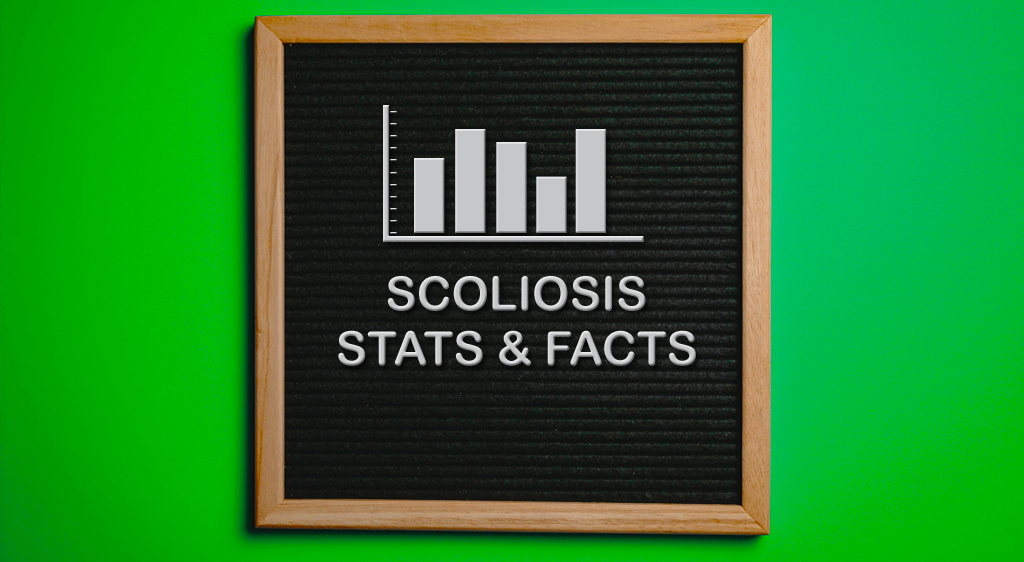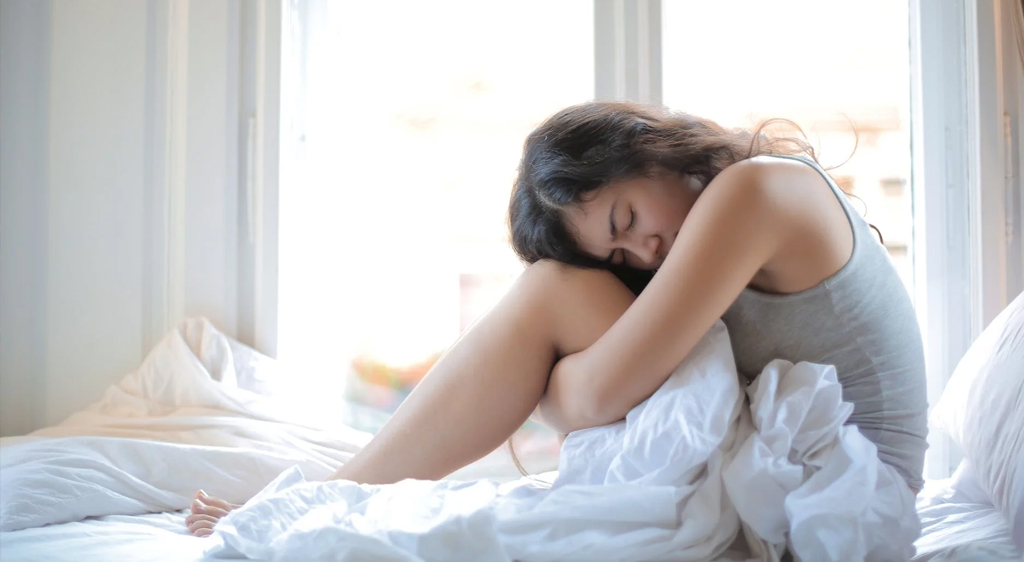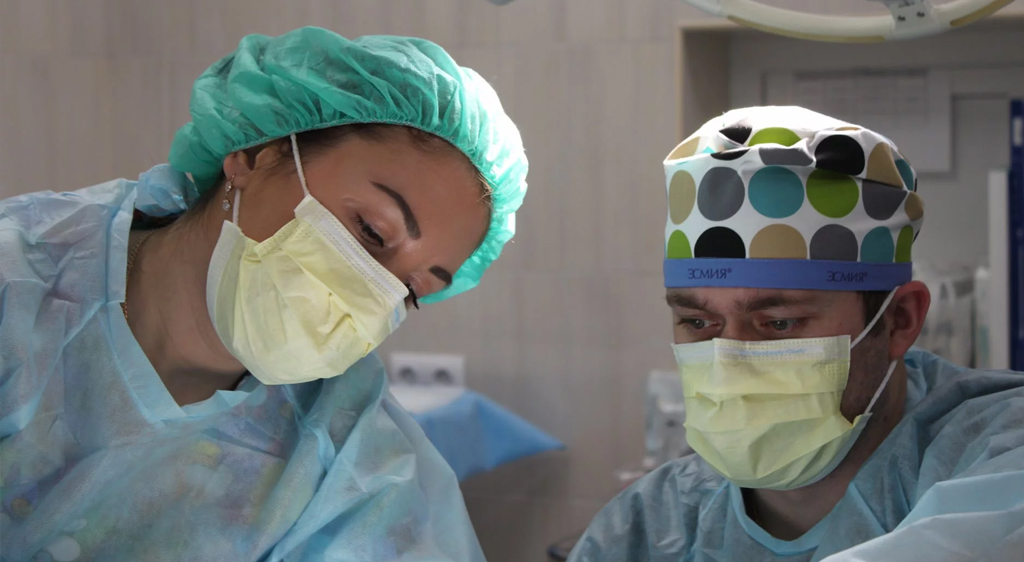Scoliosis Statistics
Scoliosis is a condition wherein the spine curves sideways. Those who have scoliosis can be born with it. Although there are a few cases where scoliosis is due to other conditions such as cerebral palsy and muscular dystrophy, most cases start in childhood. These most cases have unknown reasons and are called idiopathic. They are usually mild. However, some get more severe over time. Severe scoliosis can be disabling. The spine supports the body, so any deformities can limit people’s capabilities. For instance, a severe spinal curve can reduce the amount of space within the chest, making it difficult for the lungs to function properly.
(Mayo Clinic)
Please link to us if you find any information useful on this page. It helps us out . Thank you.
The Most Surprising Scoliosis Statistics
- Scoliosis affects 2 to 3% of the general population.
- The primary age of onset for scoliosis is around 10 to 15 years old.
- Females are 8 times more likely to get to a spinal curve that requires treatment.
- Every year, scoliosis patients make more than 600,000 visits to private physician offices.
- Around 30,000 children are fitted with a brace.
- Around 38,000 patients undergo spinal fusion surgery.
- Idiopathic scoliosis make up around 80% of cases.
- On average, it costs $92,000 for a child with scoliosis to stay in the hospital.
(American Association of Neurological Surgeons), (Scoliosis Reduction Center)
General Scoliosis Statistics and Facts
1.Scoliosis is characterized by a side-to-side curvature of the spine greater than 10°.
The condition is usually combined with a rotation of the vertebrae and most often a reduced kyphosis (reversed c-shape) in thoracic curves.
(Dr. Markus Konieczny)
2. The 2 major groups of scoliosis are idiopathic scoliosis and non-idiopathic scoliosis.
The diagnosis of an idiopathic scoliosis is made if a non-idiopathic one has been excluded.
Non-idiopathic scoliosis is classified into the following subgroups:
-
Congenital scoliosis
Congenital scoliosis occurs when the vertebrae develop improperly while the baby has not been born yet. It may not be clinically evident at birth but it develops until adolescence. Several studies have already found genes that are associated with vertebral malformation.
(Dr. Markus Konieczny)
-
Neuromuscular scoliosis
Neuromuscular scoliosis occurs when there are insufficient active muscle stabilizers for the spine, like in cerebral palsy, spinal muscular atrophy, spina bifida, muscular dystrophies or spinal cord injuries.
(Dr. Markus Konieczny)
-
Mesenchymal scoliosis
In contrast to neuromuscular scoliosis, mesenchymal scoliosis occurs when there are insufficient passive muscle stabilizers for the spine like in Marfan’s syndrome, mucopolysaccharidosis, osteogenesis imperfecta, inflammatory diseases or postoperative after thoracic surgery (open heart surgery).
(Dr. Markus Konieczny)
On the other hand, idiopathic scoliosis is classified based on the age of onset. These groups are the following:
-
Infantile scoliosis
Infantile scoliosis occurs in children before the age of 3 years. It is characterized by the presence of an abnormal curve of the spine to the right or the left. This curvature causes the spinal column to bend to one side in the shape of an S or a C.
(Columbia Doctors)
-
Juvenile scoliosis
Juvenile scoliosis develops between the ages of 4 and 10 years. Untreated curves may cause serious cardiopulmonary complications, and curves of 30° and more tend to progress.
(Dr. Markus Konieczny)
-
Adolescent scoliosis
Adolescent scoliosis generally does not result in pain or neurologic symptoms, although patients may have some back pain, typically in the low back area. The curve of the spine does not put pressure on organs like the lung or heart. Symptoms such as shortness of breath are also absent.
(Columbia Doctors)
-
Adult scoliosis
Adult scoliosis occurs after puberty because the curve is discovered after complete skeletal growth. It also occurs beyond the age of 60 years as degenerative changes in the aging spine occurs.
(Dr. Markus Konieczny)
3. Scoliosis statistics show that congenital scoliosis occurs in 1 in 10,000 newborns.
Children with congenital scoliosis sometimes have other health issues, such as kidney or bladder problems. Children with congenital scoliosis are born with a malformed spine, it is sometimes impossible to see any spine problems until they reach adolescence.
(American Academy of Orthopaedics)
4. Neuromuscular scoliosis has different incidence rates per medical condition that impairs the ability of muscles to support the spine.
Different scoliosis statistics have been compiled to have an idea of these incidence rates. These rates and their corresponding condition are shown below:
| Neuromuscular Condition | Incidence of Scoliosis |
|---|---|
|
Cerebral palsy (2-limbs involved)
|
25%
|
|
Myelodysplasia (lower lumbar)
|
60%
|
|
Spinal muscle atrophy
|
67%
|
|
Friedreich ataxia
|
80%
|
|
Cerebral palsy (4-limbs involved)
|
80%
|
|
Duchenne muscular dystrophy
|
90%
|
|
Myelodysplasia (thoracic level)
|
100%
|
|
Traumatic paralysis (less than 10 years)
|
100%
|
(American Academy of Orthopaedics)
5. Infantile scoliosis has a prevalence of about 1%.
Since the 1980s, the number of infantile scoliosis cases decreased, probably due to the recommendation that a prone position is good for infants. It was also reported that, in contrast to adolescent scoliosis, there is a regression of scoliosis in more than half of the cases.
(Dr. Markus Konieczny)
6. Juvenile scoliosis comprises about 10 to 15% of all idiopathic scoliosis in children.
At the younger age range, boys are affected slightly more than girls and the curve is often left-sided. Towards the older age range, the condition is more like adolescent idiopathic scoliosis, with a predominance of girls and right-sided curves.
(Dr. Markus Konieczny), (Scoliosis Research Society)
7. About 95% of juvenile scoliosis cases need surgery.
An operation is sometimes necessary to address spinal deformity in the young child. If the child’s curve gets worse despite bracing or casting, something will need to be done. Surgeons usually face the problem of how to stop the curve from worsening without affecting future growth. Sometimes, they have no choice but to stop the spine from growing altogether in order to stop the curving.
(Dr. Markus Konieczny), (Scoliosis Research Society)
8. Adolescent scoliosis makes up about 90% of idiopathic scoliosis in children.
Depending on the pattern and magnitude of the curve, scoliosis may be barely seen or it may have significantly visible symptoms. One of the most common sign is a shoulder appearing higher than the other.
(Scoliosis Research Society)
9. About 30% of adolescent scoliosis patients have some family history of scoliosis.
Today, there is still no cause for adolescent scoliosis that experts widely accept. Many of the patients are healthy and have no previous medical history. However, there seems to be a genetic factor.
(Scoliosis Research Society)
10. Adult scoliosis is prevalent in about 8% of adults over the age of 25 years.
Adult idiopathic scoliosis is essentially a continuation of adolescent scoliosis. Curves may increase in size 0.5 to 2° per year. Adolescent curves less than 30° are unlikely to progress significantly into adulthood, while those over 50° are likely to get bigger.
(Scoliosis Research Society), (Scoliosis Research Society)
11. Scoliosis statistics show that the prevalence of adult scoliosis rises to 68% in adults over the age of 60.
This is likely due to the discs and joints degenerating. As a consequence, the openings for the spinal sac and nerve narrow. Some patients may lean forward to try and open up space for their nerves. Others may lean forward because of loss of their natural curve (lordosis, sway back) in their lumbar spine (low back).
(Scoliosis Research Society)
Scoliosis and Sleeping

12. A good sleeping position can provide some relief from scoliosis.
An abnormal spine curve can make finding a comfortable position difficult, but finding the best one can manage any pain and optimize breathing. Doctors may suggest a sleeping position based on individual circumstances.
(ScoliSmart Clinics)
13. Some scoliosis braces should only be worn for about 8 to 10 hours per night while sleeping.
However, there are some rigid braces that require full-time wear, typically between 16 and 23 hours per day.
(Spine Health)
14. Scoliosis patients have lower levels of the sleep hormone melatonin over a 24-hour period.
A defect in melatonin synthesis might be involved in the pathogenesis of human idiopathic scoliosis. Melatonin is produced in the pineal glands. Studies on animal models where the pineal gland is removed or cut resulted in scoliosis that resembles that in humans.
(About Kids Health), (Dr. M. Girardo)
Scoliosis Treatments

15. People with scoliosis commonly take painkillers.
Back pain is one of the main complaints of adults with scoliosis. If the condition is not severe and is not causing any pain, treatment may not be needed.
(National Health Services)
16. Spinal fusion has an average success rate of about 70%.
In a spinal fusion, doctors fuse the curved vertebrae so that the bones heal into a single, solid bone. This procedure stops the abnormal bone growth. Spinal fusion uses some type of bone material, called a bone graft, to help promote the fusion.
(University of Washington)
17. Patients with adolescent scoliosis who wear their brace more than 13 hours per day has a success rate of 90% or higher.
The purpose of a scoliosis brace is to halt or slow the progression of the curve. About 75% of patients who wear the brace can have curves that do not progress to the 50° threshold for surgery at skeletal maturity. However, only about 42% of patients who did not wear a brace were not surgical candidates.
(Scoliosis Research Society)
18. Spinal injections have a success rate that ranges between 50 and 90%.
Scoliosis can irritate or put pressure on the nerves in and around the spine. As a consequence, patients can experience pain, numbness, and a tingling sensation in their lower back down to their feet. In these cases, injections of steroids and local anaesthetic may help. However, the benefits of these injections normally only last a few weeks or months, so they’re not usually a long-term solution.
(National Health Service)
Conclusion
Although scoliosis can be a serious condition, having it does not have to ruin people’s quality of life. Many have either recovered from it or continue to live normal lives. There several treatments, methods, and techniques that can help patients manage any inconvenience that scoliosis can bring.
References
Mayo Clinic:
https://www.mayoclinic.org/diseases-conditions/scoliosis/symptoms-causes/syc-20350716
American Association of Neurological Surgeons:
https://www.aans.org/Patients/Neurosurgical-Conditions-and-Treatments/Scoliosis
Scoliosis Reduction Center:
https://www.scoliosisreductioncenter.com/blog/9-surprising-scoliosis-statistics
Konieczny et al., 2013:
https://www.ncbi.nlm.nih.gov/pmc/articles/PMC3566258/
Columbia Doctors:
https://www.columbiadoctors.org/condition/infantile-scoliosis-pediatric
Scoliosis Research Society:
American Academy of Orthopaedics:
https://orthoinfo.aaos.org/en/diseases–conditions/congenital-scoliosis/
American Academy of Orthopaedics:
https://orthoinfo.aaos.org/en/diseases–conditions/neuromuscular-scoliosis/
Scoliosis Research Society:
https://www.srs.org/patients-and-families/conditions-and-treatments/adults/scoliosis
ScoliSmart Clinics:
https://www.treatingscoliosis.com/blog/scoliosis-sleeping-tips-and-best-sleeping-positions/
Spine Health:
https://www.spine-health.com/conditions/scoliosis/types-scoliosis-braces
About Kids Health:
https://www.aboutkidshealth.ca/article?contentid=2007&language=english
Girardo et al., 2011:
https://www.ncbi.nlm.nih.gov/pmc/articles/PMC3087042/
National Health Service:
https://www.nhs.uk/conditions/scoliosis/treatment-in-adults/
University of Washington:
Scoliosis Research Society:


